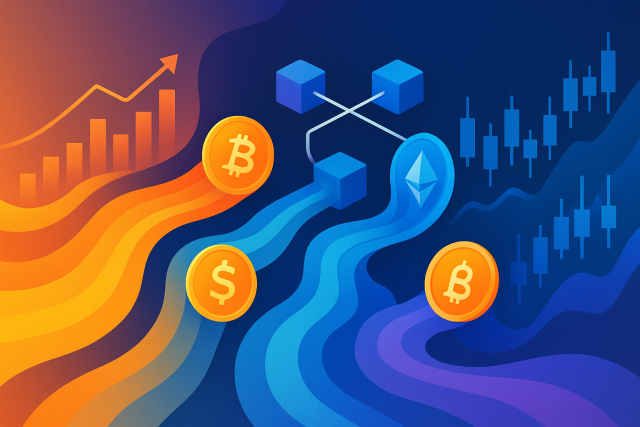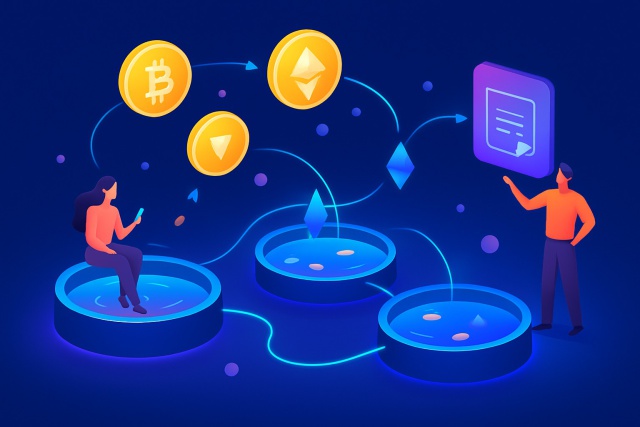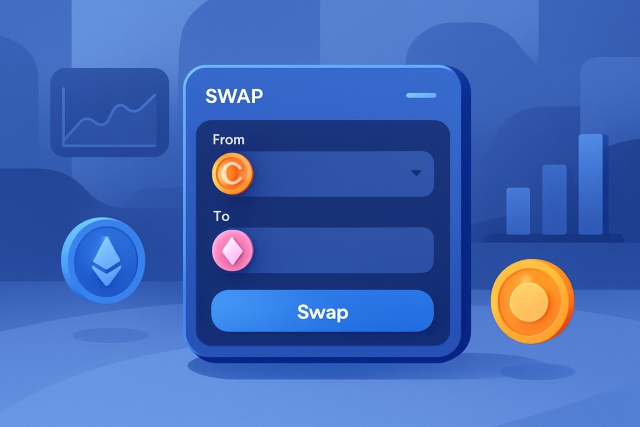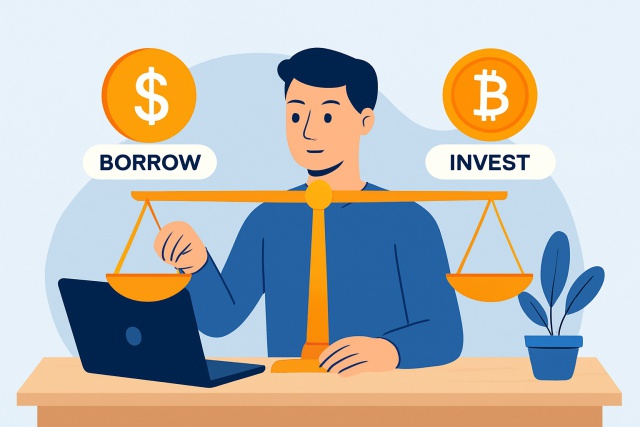What is Decentralized Finance and How It Works Without Middlemen?

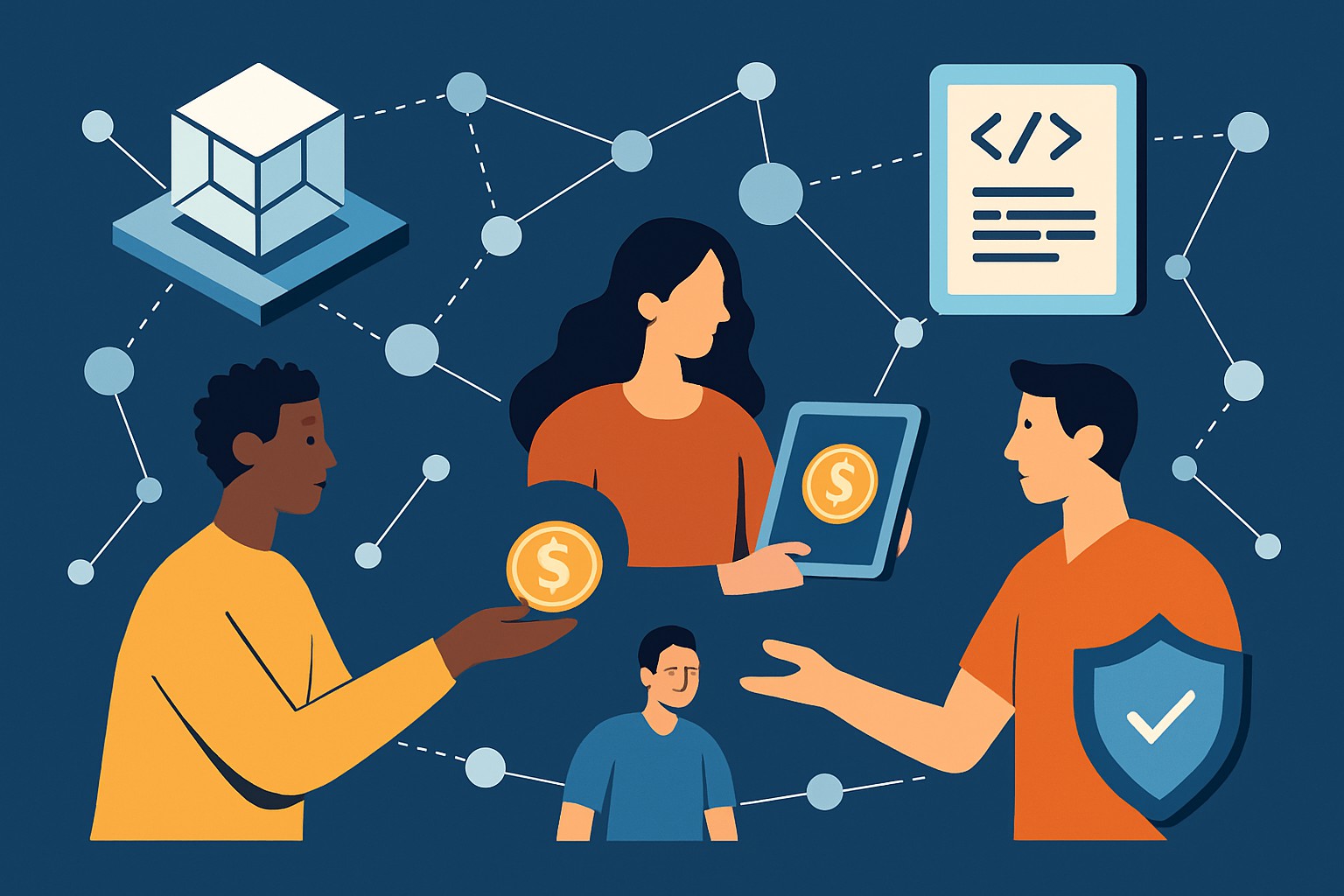
This article takes a close look at how decentralized finance is shaking up the way we handle money by cutting out old-school middlemen.
- See how DeFi uses blockchain technology to bypass banks and brokers and puts you in control of your financial assets.
- Find out how smart contracts handle lending, borrowing and trading on autopilot with no humans needed, which is pretty neat if you ask me.
- Discover the main perks of DeFi like lower fees, access from anywhere in the world and a boost in transparency and security that’s hard to beat.
- Get the lowdown on risks and hurdles from tricky smart contract flaws to murky regulatory waters and tips on how to navigate these bumps.
- Follow a hands-on guide to jumping into popular DeFi platforms like Uniswap and Aave so you can dive in today without feeling lost.
- Explore what lies ahead for finance including exciting trends like cross-chain interoperability and layer 2 scaling solutions that could shake things up.
Decentralized Finance or DeFi is turning the finance world on its head by doing away with usual middlemen like banks and brokers. Thanks to blockchain technology, DeFi offers financial tools that are open, transparent and permission-free, letting almost anyone on the planet dive in. By cutting out intermediaries it usually gives users more control, lowers costs and boosts efficiency.
What Exactly Does Decentralized Finance (DeFi) Mean Anyway
Decentralized finance (DeFi) is essentially a setup where financial transactions and services carry on without leaning on any central authorities. Rather than turning to banks or brokers, DeFi taps into blockchain technology to build transparent open protocols. Users get to keep full control over their assets with no middlemen breathing down their necks.
- Built on blockchain technology delivering a financial infrastructure that’s rock solid and tamper-proof.
- Operates on trustless systems so users can skip relying on middlemen altogether.
- Offers permissionless access meaning anyone across the globe can jump in without jumping through hoops.
- Leverages smart contracts that automatically execute agreements, no hand-holding or manual input required.
The Role of Middlemen in Traditional Finance
Sometimes, it feels like middlemen are the unsung heroes—or occasional speed bumps—in the grand narrative of traditional finance. These individuals step in to connect the dots, helping transactions flow smoothly between parties who might otherwise be talking past each other. Sure, their involvement can add a bit of extra time and cost, but in many cases, they serve as a kind of safety net, making sure everything stays above board and everyone gets a fair shake. In my experience, while they might sometimes be seen as just a necessary evil, middlemen often play a key role in keeping the financial ship sailing steady through choppy waters.
Traditional finance relies on middlemen like banks, brokers and clearinghouses to process transactions, keep the books straight and manage risks. These individuals offer a layer of trust and regulatory oversight that can be comforting but also come with headaches like higher fees, slower transaction speeds and restricted access.
- Handling financial transactions between parties with a keen eye for accuracy and strict adherence to compliance—because nobody likes surprises in their ledgers.
- Building trust through regulated entities that carry serious fiduciary responsibilities keeping everyone’s confidence intact.
- Protecting custody of funds and assets helping to keep fraud at bay and peace of mind front and center.
- Managing dispute resolution and coordinating settlements among all involved parties smoothing out wrinkles before they become headaches.
- Enforcing regulatory requirements for anti-money laundering and KYC processes making sure the system stays clean and above board.
| Feature | Traditional Finance (Intermediaries) | Decentralized Finance (DeFi) |
|---|---|---|
| Control | Centralized institutions keep a tight grip on control | Users get to call the shots directly over their own assets, no middlemen involved |
| Cost | Fees tend to run on the higher side, thanks to all those intermediaries | Usually lower fees since automation and decentralization cut out the extra fluff |
| Speed | Often moves at a snail’s pace because of manual steps and settlement delays | Almost lightning fast, with blockchain confirmations happening in the blink of an eye |
| Transparency | Can be a bit of a mixed bag and often limited, depending on the institution | Completely transparent, thanks to public blockchain records everyone can peek at |
| Accessibility | Bound by geography and credit checks, making it feel like a real hurdle for many | Open doors worldwide — no gatekeepers standing in the way, just pure access for all |
How Decentralized Finance Gets Things Done Without Middlemen
Decentralized Finance operates on blockchain technology, which keeps distributed ledgers across a whole host of computers around the globe. Smart contracts—think of them as self-running programs—take care of financial agreements and transactions automatically, no human nudging required. These systems lean on peer-to-peer networks, allowing users to connect directly and skip the usual middlemen altogether.
How Smart Contracts Can Smoothly Automate Financial Transactions
Smart contracts are programmable scripts running on blockchains that spring into action automatically once certain conditions are met. They cut out middlemen by enforcing agreements in plain sight which helps trim down errors and reduce risks. In the world of DeFi, these clever contracts drive everything from automated lending to decentralized exchanges and insurance payouts, shifting trust from people to code.
- Platforms that link lenders and borrowers directly, tossing banks out of the equation.
- Decentralized exchanges where individuals swap tokens straight-up, no middleman or central order book in sight.
- Stablecoins crafted to keep crypto values snugly close to fiat currencies, helping to tame those wild price swings.
- Yield farming techniques that let users rake in interest or rewards by providing liquidity—sort of like planting seeds and watching them grow.
- Decentralized insurance that tackles risks with clear, automated claim processes—cutting through the usual red tape.
How Consensus Mechanisms Build Trust and Keep Security Tight
Decentralized networks lean on consensus algorithms like Proof of Work (PoW) or Proof of Stake (PoS) to get transactions confirmed—the communal nod that everything’s above board.
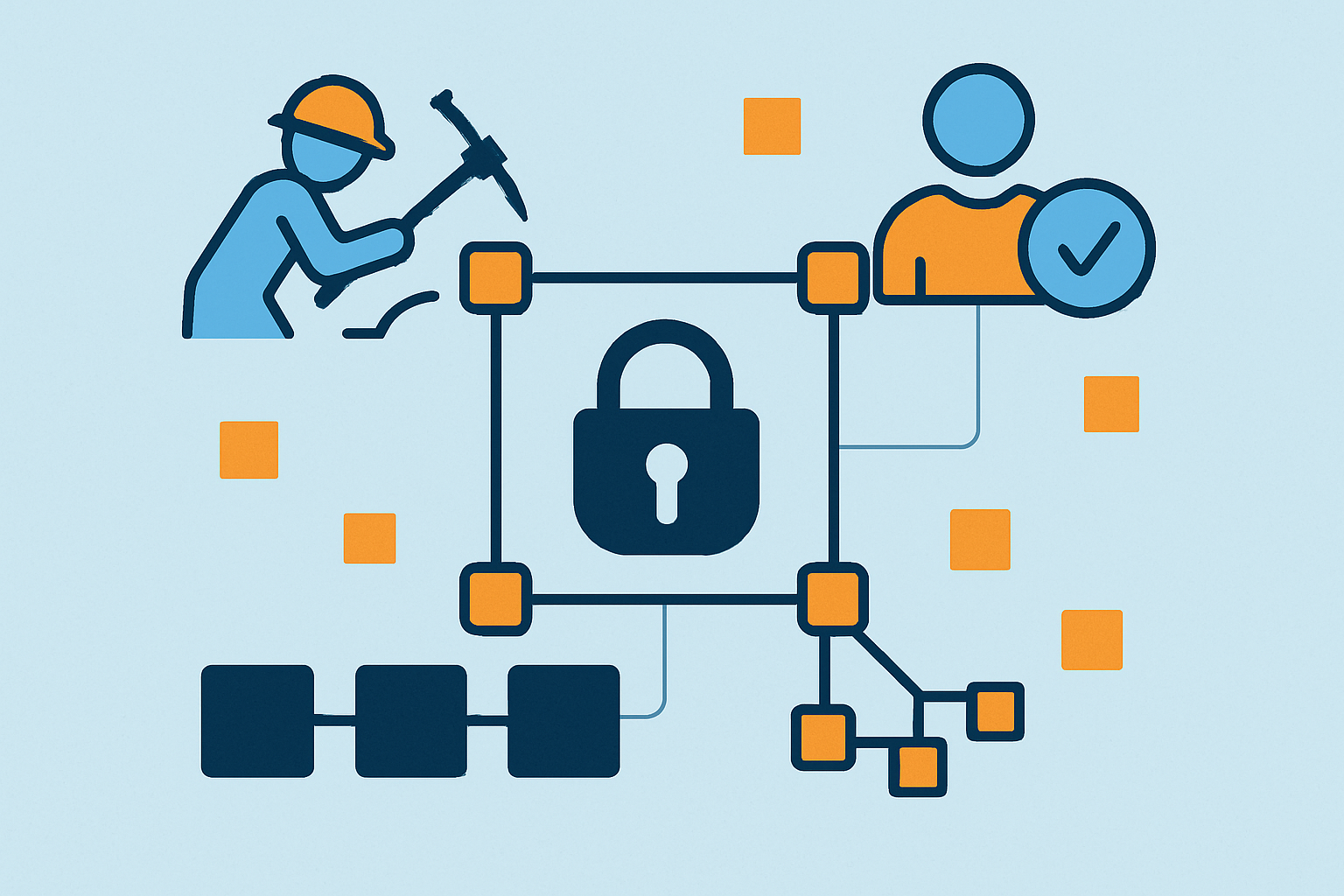
The Advantages of Decentralized Finance Compared to Traditional Systems
Let's dive into why decentralized finance, or DeFi for short, is gaining so much traction compared to traditional financial systems we have all come to know. It is not just about flashy tech buzzwords; there are some solid reasons that make DeFi stand out in a crowd.
First off, meaning transactions can often be faster and cheaper. Plus, since it is built on blockchain, transparency is not just a buzzword here; it is baked right in. Everyone can see what is happening, which, if you ask me, is refreshing in a world where financial secrecy often rules the day.
Also, DeFi opens the door for anyone with an internet connection to participate, breaking down barriers that traditional finance hasn’t quite managed to overcome. It’s like opening the gates of a club that used to be invite-only. Of course, this also means you’re taking on more responsibility the wild west of finance, as some like to call it.
In essence, decentralized finance presents a promising alternative that’s reshaping how we think about money and control. It’s an exciting ride, full of opportunities, challenges, and yes, a few pitfalls to watch out for along the way.
DeFi brings a bunch of perks to the table like open access for anyone with an internet connection and much lower fees because it cuts out the usual middlemen. It also offers crystal-clear transparency thanks to public ledgers. Plus it provides stronger security through clever cryptographic methods and boosts privacy protections.
- Helps boost financial inclusion by reaching people who are unbanked or underbanked around the globe and giving them a chance to join the financial party.
- Cuts down counterparty risk by dialing back reliance on centralized institutions which can sometimes be a wild card.
- Supports programmable assets that can be customized and blended to create complex financial products, making finance feel like cooking with a versatile recipe.
- Encourages composability, allowing different DeFi protocols to hook up and innovate at lightning speed like a well-rehearsed jam session.
- Provides resistance to censorship so users hold the reins and can operate without interference from usual authorities or institutions.
Potential Risks and Challenges Lurking in Decentralized Finance
Vulnerabilities lurking in smart contract code and regulatory curveballs could shake up the whole scene. Liquidity risks might tie up user funds unexpectedly. Navigating complex interfaces is tricky and requires the know-how to get involved safely.
- Technical glitches and bugs that might lead to loss of funds if you are not careful.
- Governance risks where decision-making could feel too centralized or open to manipulation.
- Network scalability issues that cause high fees and sluggish transactions when the system is jam-packed.
- A lack of traditional consumer protections leaving you with fewer options if things go sideways.
- Exposure to wild market swings that can shake up asset values faster than you can blink.
"Diving into decentralized finance definitely requires rolling up your sleeves and doing some thorough homework, along with a good handle on the protocols behind it all. That way, you can keep risks in check while still reaping the perks of its fresh and innovative landscape." – Dr. Lena Moretti, Blockchain Security Expert
Step-by-Step Guide on Navigating DeFi Platforms Without Those Middlemen
Getting started with DeFi platforms is usually straightforward as long as you stick to a few key steps. First, you’ll want to set up a crypto wallet. Then get your hands on some cryptocurrencies. Pick the protocols that fit your needs and finally learn how to manage transactions without pulling your hair out.
Pick a reliable cryptocurrency wallet that works well with popular blockchains like Ethereum or Binance Smart Chain and will not cause you headaches later.
Get the cryptocurrencies you need, such as ETH or stablecoins through exchanges or peer-to-peer options.
Research and select trustworthy DeFi protocols that match your financial goals because not everything that looks good is reliable.
Connect your wallet securely to the DeFi platform using its web interface or dApp. Being cautious here really helps.
Perform transactions like lending, borrowing, or swapping tokens but double-check the fees and terms to avoid any surprises.
Regularly monitor your assets and follow strong security practices like using hardware wallets and strong passwords to help you sleep better at night.
Real-World Examples and Some of the Most Famous DeFi Platforms You’ve Probably Heard Of
Leading DeFi projects such as Uniswap, Aave, Compound and MakerDAO have truly shaken up the way financial services operate by cutting out the middlemen. They empower users to trade, borrow and lend straight through blockchain protocols.
- Uniswap is a decentralized exchange that uses automated market makers to keep token swaps running smoothly without the fuss of traditional order books. It is almost like magic under the hood.
- Aave is a lending protocol where individuals can borrow and lend assets directly with interest rates that change over time. It’s like a financial playground where things are always in motion.
- Compound is an algorithm-driven money market platform designed to make decentralized borrowing and earning interest easy. It takes the headache out of the process.
- MakerDAO issues the DAI stablecoin which tries to stay cozy with the US dollar through a soft peg. It is backed by crypto collateral holding down the fort behind the scenes.
- Yearn.finance is a yield aggregator that does the heavy lifting for users and automatically sniffs out the juiciest yield farming opportunities across many DeFi projects. It’s like having a savvy financial scout in your corner.
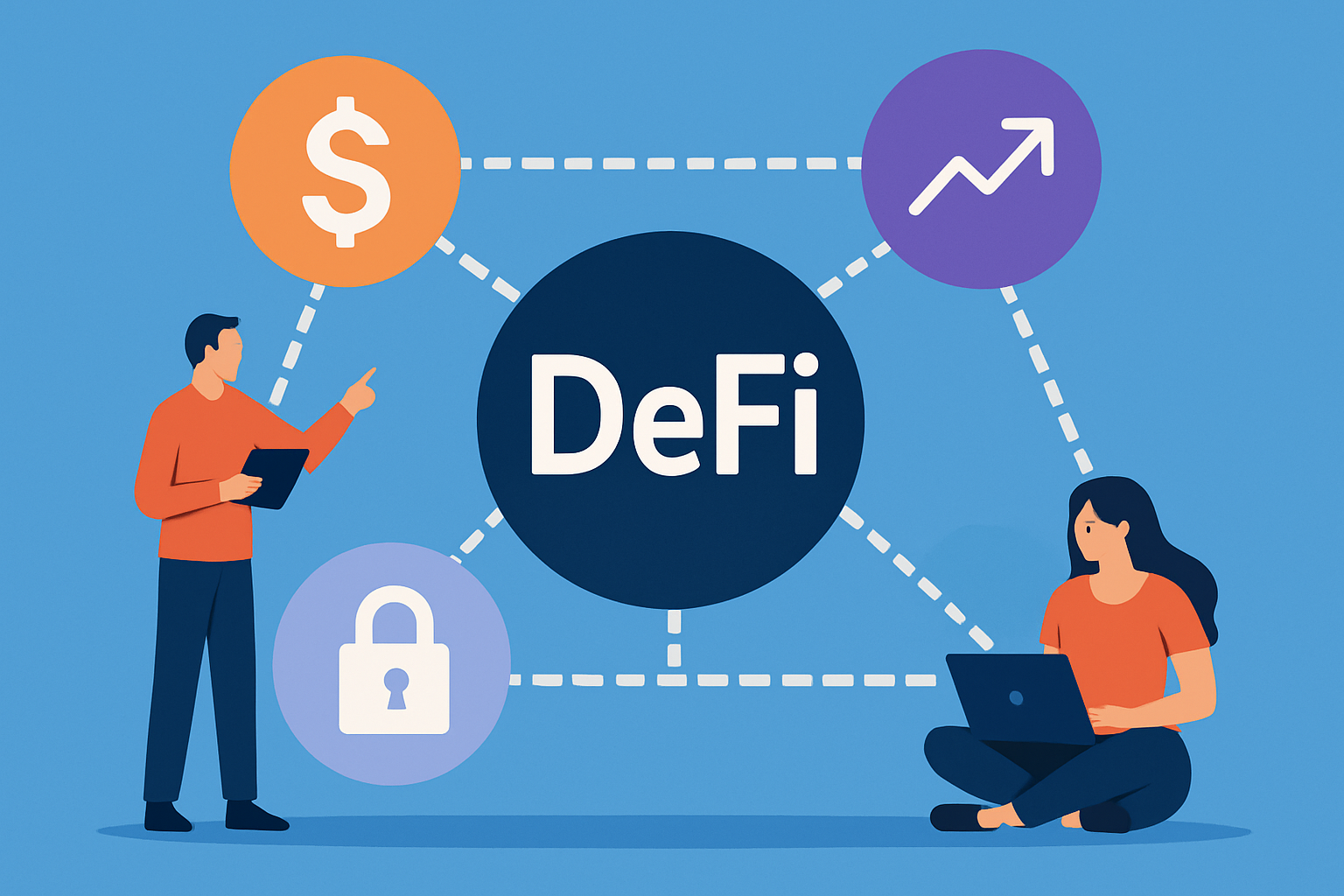
Emerging Trends in Decentralized Finance
Decentralized Finance, or DeFi if you are in the know, is rapidly reshaping the financial landscape. From innovative lending platforms that cut out the traditional middleman to yield farming strategies that can make your head spin, these trends are more than just buzzwords—they're changing the way we think about money. It is a bit like watching the Wild West evolve into a bustling city, full of opportunity but still figuring out its rules. Whether you are a seasoned crypto enthusiast or just dipping your toes in, keeping an eye on these developments is smart—and maybe a little exciting too.
Decentralized finance is moving at a breakneck pace these days with fresh breakthroughs designed to get different blockchains chatting with each other through cross-chain interoperability. Layer 2 scaling solutions usually bring down fees and crank up transaction speeds, which is always a welcome change. Meanwhile, we are also seeing integration bridges popping up between DeFi and traditional finance while the gradual emergence of clearer regulations is quietly shaping its global growth.
- Developing layer 2 solutions that seriously ramp up scalability while slashing transaction costs to more wallet-friendly levels.
- Giving privacy features a much-needed boost to back confidential and secure transactions in the ever-evolving world of DeFi.
- Expanding decentralized insurance options to provide better ways to handle risk these days.
- Watching adoption spread more and more catching on with both retail individuals and the big institutional players alike.
- Forging closer ties with regulators aiming to build ecosystems that are not just sustainable but also play nicely with the rules.
Frequently Asked Questions
Is my money safe in DeFi platforms?
The safety of your money in DeFi hinges on how solid the protocol’s smart contract code is because like any code it can have vulnerabilities. Unlike your bank, DeFi doesn’t have FDIC insurance to protect you if something goes wrong. It is a good idea to check a platform’s audit history carefully, use hardware wallets for anything sizable, and remember that with your private keys and funds, you’re the captain of your ship.
Do I need technical knowledge to use DeFi?
A bit of basic tech comfort helps but many DeFi platforms aim to be user-friendly. The trick is to understand essentials like gas fees, connecting wallets, and approving transactions. My advice? Start small and try well-known platforms like Uniswap or Aave until you get the hang of it.
What are the typical costs involved in using DeFi?
Most costs come from blockchain network fees called gas fees which can vary depending on network traffic. Some platforms also take a small cut on swaps or trades. Usually, these fees are lower than traditional finance but on busy networks like Ethereum, prices can skyrocket when demand peaks.
How can I start using DeFi with a small amount of money?
Start by setting up a MetaMask wallet and buying some ETH or stablecoins from a trusted exchange. Then, try providing liquidity to a major pool on Uniswap or make a modest deposit on Aave. Keep security in mind and always start small to manage risk.
What happens if a smart contract has a bug or gets hacked?
If a vulnerability is exploited, the money in the affected smart contract could vanish or be stolen. Usually, there’s no safety net or compensation. This is why it’s important to use protocols with thorough audits and testing and never invest more than you can afford to lose.


